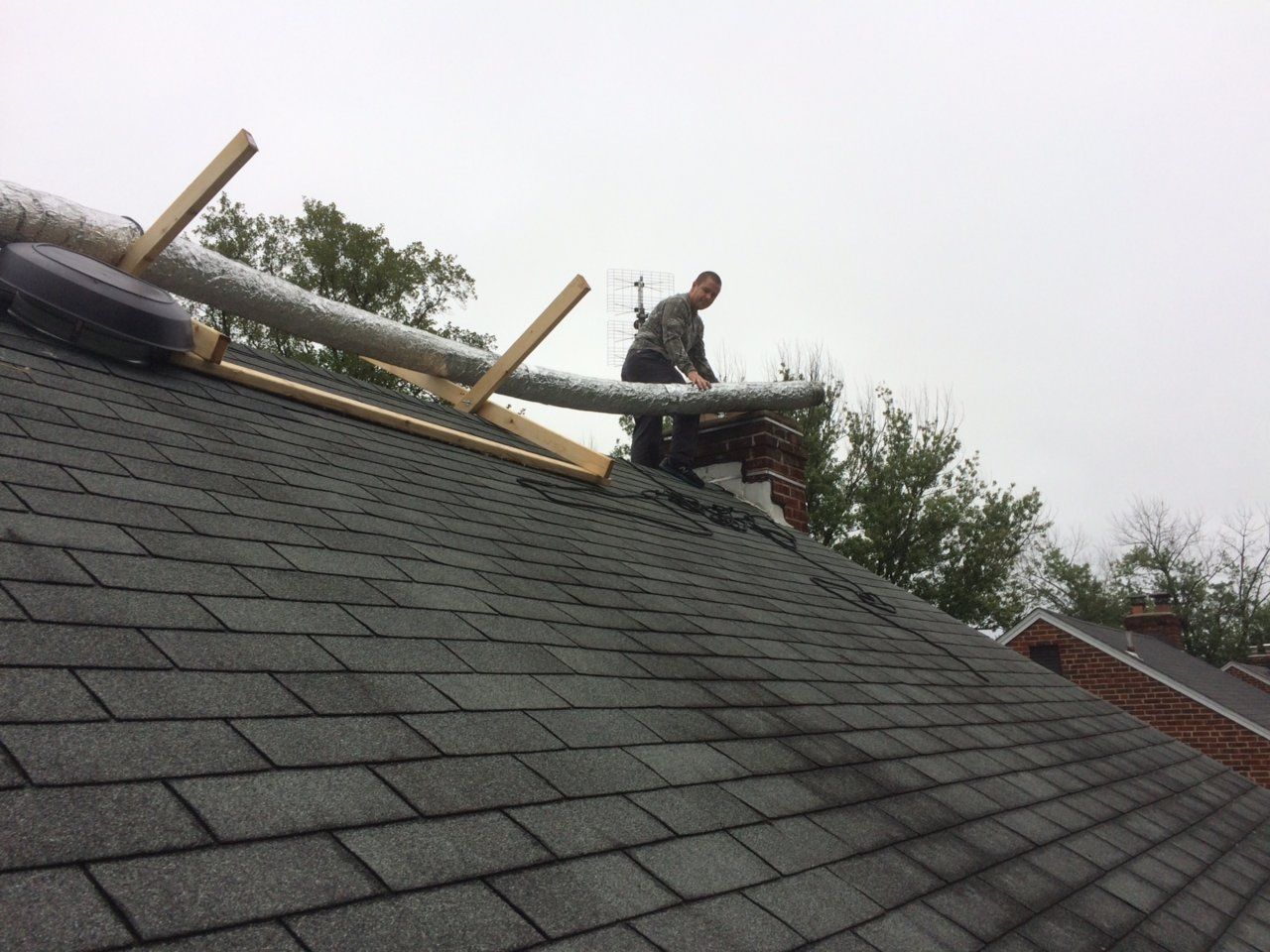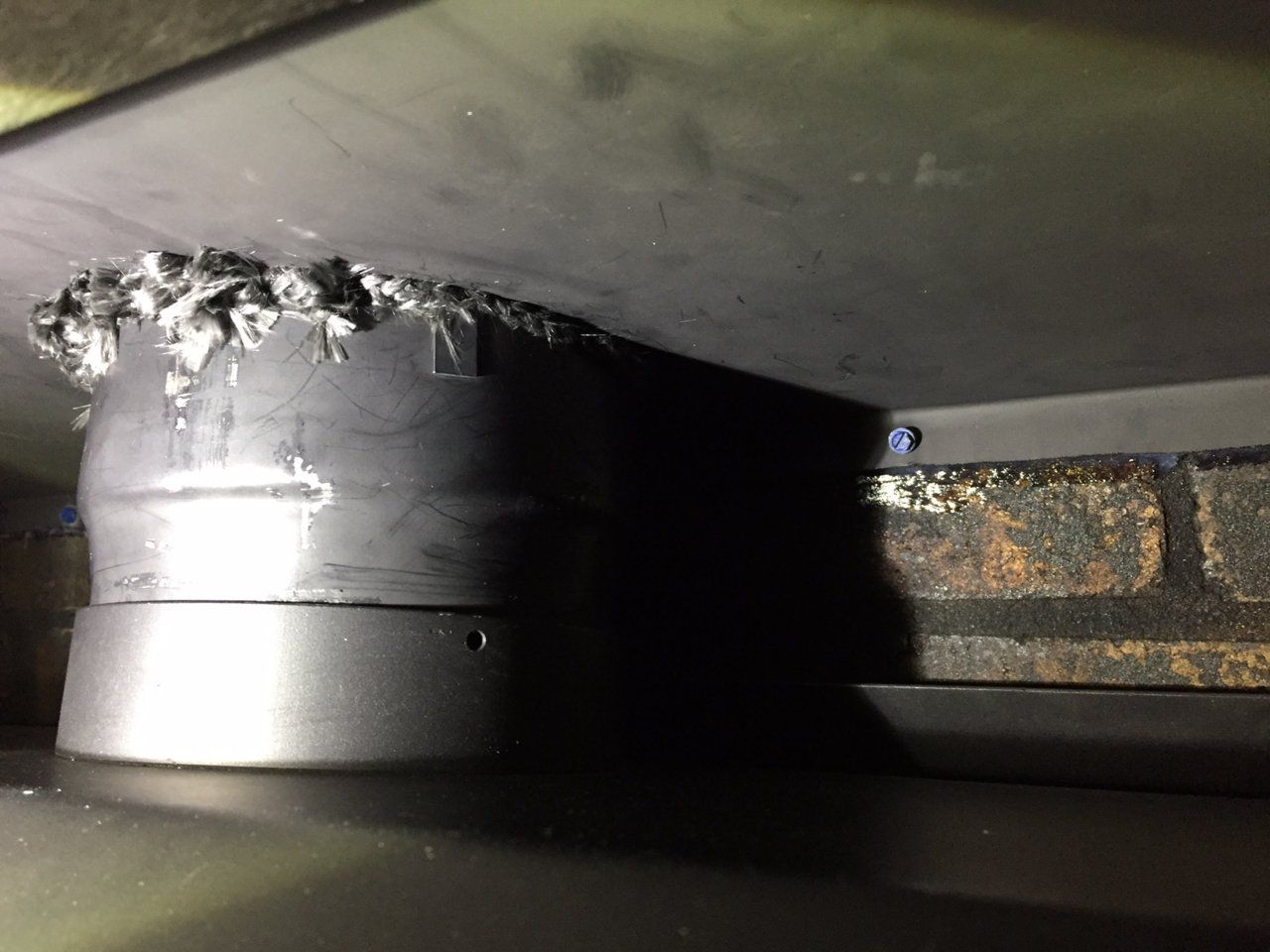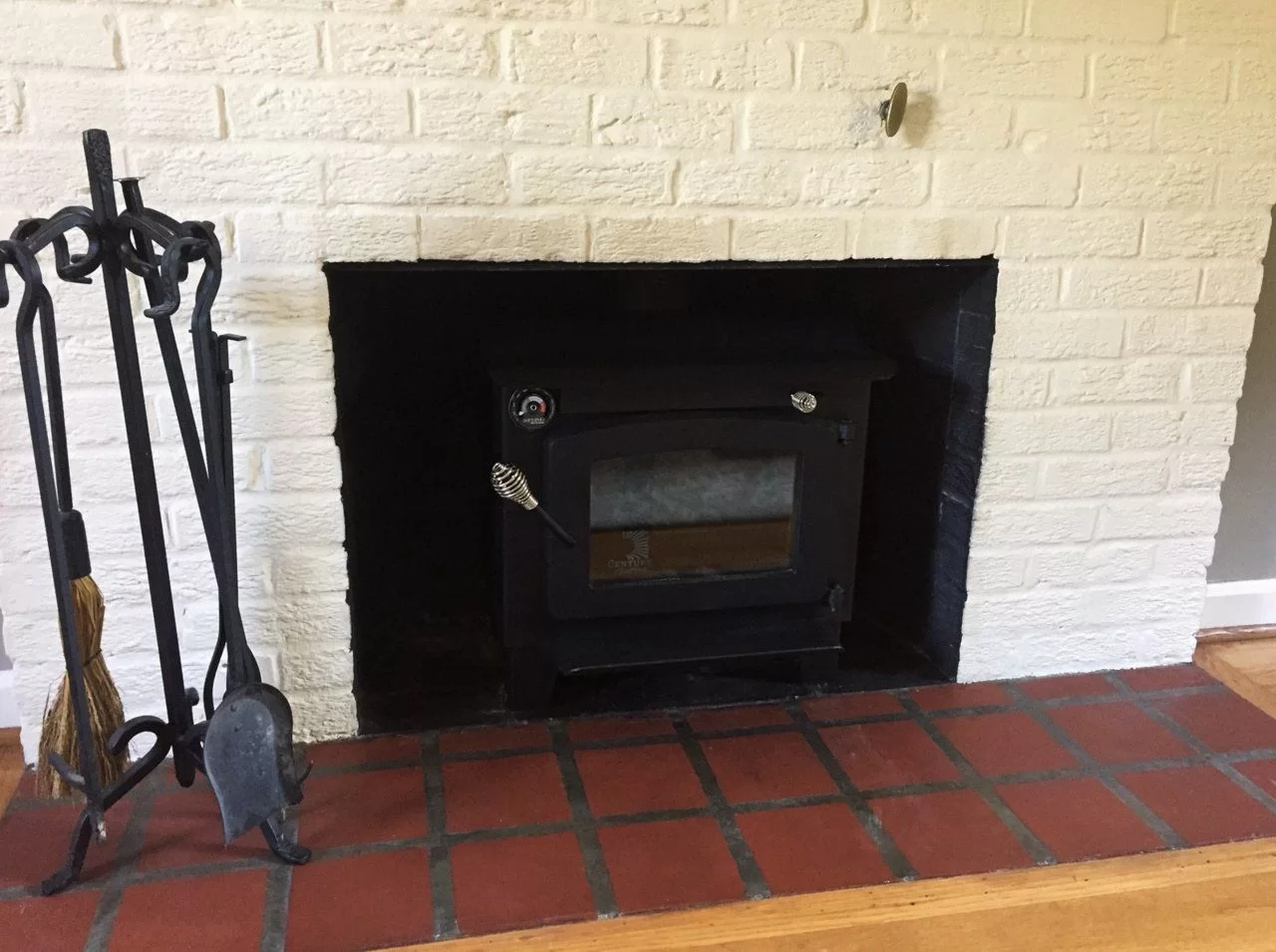It was a lot of planning and work...
Had to order it from Menards in Ohio. $700ish including shipping; will have $300 off that from tax credit. Stores in VA are way over priced, little options, and much like a mechanic who tries to sell you everything and knows nothing nuanced about your situation. Had the chimney swept professionally, they removed about a 5 gallon bucket worth of dry ash from the smoke shelf; I removed a good amount more after with shop-vac.
Cut about 3" off legs with angle grinder, repainted bottoms of legs.
Gap between appliance connector and block off plate was filled with 2 sizes of braided gasket sealer... it's not pretty but should work, seal-wise, and is hidden visually.
Removed the damper plate, not the sides of the damper parallel to the wall. Used an angle grinder to open up damper sides enough for 6" liner.
Went with the easy flex (Olympia) liner from Woodland Direct, which feels very substantial. Much heavier duty and thick than I expected. Ovalized with a 2x6" on the driveway. Liner is 23.5'+' Top 15' insulated. Insulated the whole thing and had to remove insulation for lower section on the roof because it would not fit down, but the top insulation seems to be the most important logically.
Insulated block-off plate / flue opening with roxul. Sealed with hi-temp silicone. Stove is small but have read good things about it.
Had to order it from Menards in Ohio. $700ish including shipping; will have $300 off that from tax credit. Stores in VA are way over priced, little options, and much like a mechanic who tries to sell you everything and knows nothing nuanced about your situation. Had the chimney swept professionally, they removed about a 5 gallon bucket worth of dry ash from the smoke shelf; I removed a good amount more after with shop-vac.
Cut about 3" off legs with angle grinder, repainted bottoms of legs.
Gap between appliance connector and block off plate was filled with 2 sizes of braided gasket sealer... it's not pretty but should work, seal-wise, and is hidden visually.
Removed the damper plate, not the sides of the damper parallel to the wall. Used an angle grinder to open up damper sides enough for 6" liner.
Went with the easy flex (Olympia) liner from Woodland Direct, which feels very substantial. Much heavier duty and thick than I expected. Ovalized with a 2x6" on the driveway. Liner is 23.5'+' Top 15' insulated. Insulated the whole thing and had to remove insulation for lower section on the roof because it would not fit down, but the top insulation seems to be the most important logically.
Insulated block-off plate / flue opening with roxul. Sealed with hi-temp silicone. Stove is small but have read good things about it.
Last edited:








